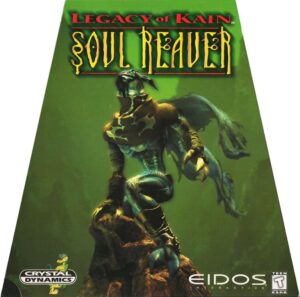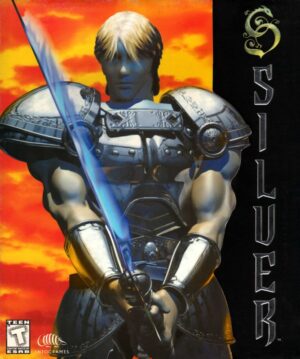Retro Replay Review
Gameplay
deSpiria blends classic RPG mechanics with adventure-style exploration, all presented from a first-person perspective. As Allure Valentine, you navigate dark tunnels and futuristic environments by highlighting interactable objects with the A button. These moments are punctuated by short CG sequences that drive the narrative forward, offering a cinematic feel akin to many Western adventure titles.
(HEY YOU!! We hope you enjoy! We try not to run ads. So basically, this is a very expensive hobby running this site. Please consider joining us for updates, forums, and more. Network w/ us to make some cash or friends while retro gaming, and you can win some free retro games for posting. Okay, carry on 👍)
Combat unfolds in turn-based encounters where Allure calls upon several “minds” instead of a traditional party. Each mind embodies a distinct element—love, curse, fury, and more—and brings unique abilities to the battlefield. When you select a mind attack, you’ll see your chosen summon step forward, unleashing flashy, thematic abilities that vary based on the enemy’s weakness or resistance.
The pacing between exploration and combat is deliberate. Tunnels and train cars hide puzzles that require careful observation, while battles challenge you to assemble the right combination of minds for each foe. Although some encounters can feel repetitive, the strategic layer of mind management keeps fights engaging, especially when facing tougher Church agents or mutated creatures lurking beneath the city.
Graphics
Visually, deSpiria captures the neon-lit grit of a futuristic Japan in 2070. The environments range from decaying subway tunnels to high-tech Church facilities, each rendered with moody lighting that underscores the game’s dystopian atmosphere. Textures can be a bit dated, but cleverly placed light sources and shadow play compensate, immersing you in this post-World War III world.
Character design is one of the game’s standout features. Allure Valentine’s sleek undercover attire contrasts sharply with the grotesque forms of her summoned minds, which are brought to life via detailed sprite work and dynamic animation sequences. The elemental effects—swirling hearts for love attacks, crackling black energy for curses—add visual flair to battles without overwhelming the screen.
The short CG sequences used during exploration and key story beats are surprisingly polished. These interludes break up the static corridors and battle screens, giving you visual rewards for solving puzzles or advancing the plot. While some textures on environmental objects look low-resolution up close, the overall art direction maintains a cohesive, cinematic aesthetic.
Story
Set twenty-two years after World War III, deSpiria plunges you into a Japan ruled by a shadowy organization known only as the Church. You assume the role of Allure Valentine, an undercover agent whose loyalty is as mysterious as her past. This premise sets the stage for a narrative that oscillates between espionage thriller and supernatural horror.
The inciting incident—a train crash that leaves Allure trapped in an underground tunnel—serves as a tight, suspenseful opening. You’ll piece together what caused the derailment while fending off Church enforcers and otherworldly threats. As secrets unravel, the story explores themes of faith, identity, and moral ambiguity, urging you to question who the real enemy is.
Side characters and minor plot threads further enrich the experience. NPCs you rescue or interrogate provide tidbits of lore about the Church’s true ambitions and the cataclysmic events of the past. Though some dialogue can veer into exposition-heavy territory, it never strays too far from maintaining tension and momentum.
Overall Experience
deSpiria delivers a unique blend of RPG strategy and adventure puzzle-solving that will appeal to fans of both genres. Its slow-burn pacing rewards careful exploration and thoughtful combat planning. While some players may find the turn-based battles a bit grind-heavy, the mind-summoning mechanic adds enough variety to prevent monotony.
The game’s atmospheric presentation—moody lighting, striking CG interludes, and a haunting soundtrack—works in harmony to evoke a sense of post-war dread. Occasional technical hiccups, like texture pop-in or minor frame dips during hectic battles, are overshadowed by the strong art direction and immersive world-building.
Ultimately, deSpiria stands out as an ambitious title that forges its own path. Its fusion of first-person adventure elements with traditional RPG combat may not be for everyone, but those who embrace its style will find a compelling story, memorable characters, and a richly detailed cyberpunk landscape worth exploring. Ideal for players seeking a narrative-driven game with strategic depth and atmospheric flair.
 Retro Replay Retro Replay gaming reviews, news, emulation, geek stuff and more!
Retro Replay Retro Replay gaming reviews, news, emulation, geek stuff and more!




Reviews
There are no reviews yet.